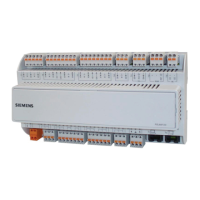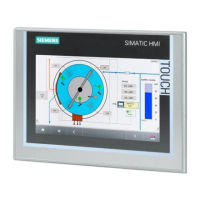Block library TeleControl ST7
5.7 Master copies
TIM 1531 IRC
242 Operating Instructions, 02/2018, C79000-G8976-C468-02
Using FC TestCopy, extracts of the data traffic between ST7 subscribers can be recorded or
the entire traffic can be recorded. With search masks to be set in the control field of DB
TestCopyData individual frame types can be filtered out and then copied from the send or
receive buffer for further evaluation in the DB TestCopyData. For details, see below.
Send and receive frames are all stored in the same data block DB TestCopyData. This
makes it simple to track the chronological order of the copied send and receive frames.
To use the TestCopy function, the user program must meet the following conditions:
● The FC TestCopy function must be available on the CPU.
● DB TestCopyData must be present on the CPU and have a sufficient length.
– To achieve this, copy DB TestCopyData (DB99) from the TD7 library to your CPU.
– If necessary, change the length of the buffer area in the DB by increasing or
decreasing the size of the array "TestCopyBuffer" in DW40, which has the default
length of [0..240] WORD.
● Make the following entries in the respective communication DB of the CPU 300/400
(BComData / XComData / PComData) whose send and/or receive frames you want to
write:
– In DW32 (TestCopyDBNo) of the communication DB, enter the number of the DB
TestCopyData.
– In DW34 (TestCopyFCNo) of the communication DB, enter the number of the FC
TestCopy.
Proceed in the same way for the communication DB of CPU 1500. The tags in DB
BConnectData have the same names.
Linking FC TestCopy into the user program
If the above-mentioned conditions are fulfilled, the test function is processed cyclically by the
respective communication FB of the CPU.
FC TestCopy cannot be called in the user program.
Monitoring the written data
Use the ready-made watch table "TestCopyMonitor", which you can copy from the TD7
library into the "Watch and force tables" directory of the CPU.
If the settings are to be retained even after CPU startup, they can also be stored directly in
the start values of the individual BConnection instances of the DB BConnectData.
